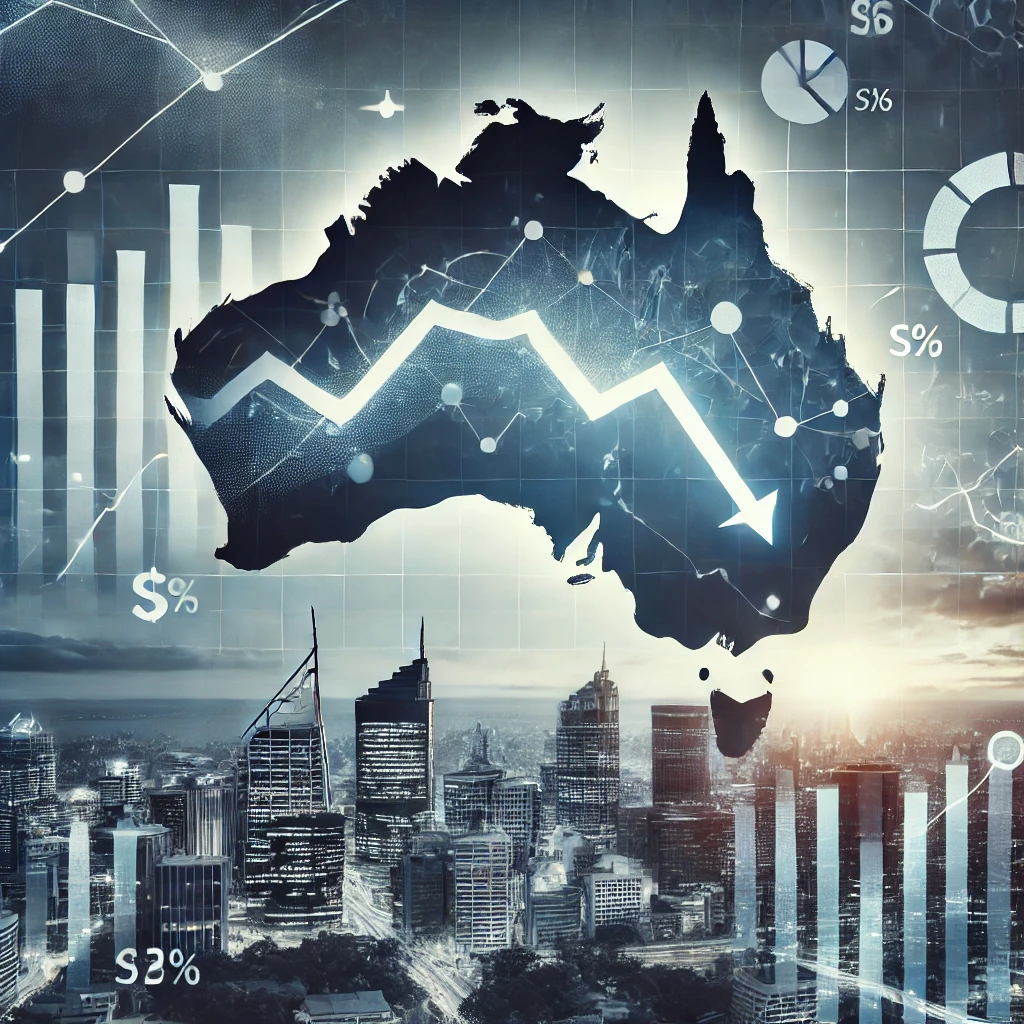
Australia's Economy Faces Challenges Amid Weak Growth Figures
Australia's economy, a vital cog in the Asia-Pacific region, is facing unprecedented challenges as it struggles to maintain robust growth. Recent data points to weak economic performance, raising questions about the nation's resilience in a rapidly shifting global landscape. This blog delves into the causes of Australia's sluggish growth, its implications for various sectors, and potential pathways to recovery, ensuring an SEO-optimized narrative for maximum reach.
Understanding Australia’s Weak Economic Growth
Australia has long been admired for its stable economy, but recent figures have painted a sobering picture. The country’s GDP growth has decelerated, with quarterly data showing marginal increases, failing to meet expectations. Several factors have contributed to this economic stagnation:
-
Global Economic Slowdown: The ripple effects of global economic uncertainties, particularly in China and the United States, have impacted Australia’s export-driven economy. Weak demand for commodities like iron ore and coal has dented revenue streams.
-
Rising Cost of Living: Domestic inflationary pressures have reduced consumer spending. With wages failing to keep pace with rising living costs, household budgets are stretched thin, affecting retail and service industries.
-
Interest Rate Hikes: The Reserve Bank of Australia (RBA) has been tightening monetary policy to combat inflation, leading to increased borrowing costs. Higher interest rates have slowed down investments and dampened housing market activity.
-
Trade Challenges: Geopolitical tensions and evolving trade policies have disrupted Australia’s trade relationships, especially with major partners like China. Exporters are facing barriers that limit market access, further aggravating the economic slowdown.
Impact on Key Sectors
Australia’s weak economic growth is not confined to a single sector; its effects ripple across various industries:
- Mining and Resources: Once the cornerstone of Australia’s economy, the mining sector faces reduced demand from China, leading to lower production and revenue.
- Housing Market: Property prices have stagnated, and construction activity has slowed due to higher interest rates, creating challenges for builders and real estate developers.
- Tourism and Education: Australia’s tourism and education sectors, which heavily rely on international visitors and students, are still recovering from the pandemic’s impact. A slower rebound in these sectors has compounded economic challenges.
- Retail: Weak consumer spending has led to subdued growth in retail, with businesses struggling to adapt to changing market dynamics.
Regional Disparities in Economic Performance
Australia’s economic challenges are not uniformly distributed across the country. While metropolitan areas like Sydney and Melbourne grapple with housing affordability and inflation, regional areas face unique struggles. Resource-rich states such as Western Australia are disproportionately affected by declining commodity prices, while regions dependent on agriculture confront climate-related adversities.
Government Response to Weak Growth
The Australian government has introduced several measures to address the slowing economy, but the effectiveness of these policies remains debated. Key initiatives include:
- Infrastructure Investments: To stimulate growth, the government has allocated funding for infrastructure projects, aiming to create jobs and boost economic activity.
- Tax Reforms: Reductions in corporate tax rates and incentives for small businesses have been proposed to encourage investments.
- Support for Key Industries: Targeted support for sectors like tourism, agriculture, and manufacturing is designed to drive sector-specific growth.
While these measures are steps in the right direction, structural reforms and long-term strategies are essential for sustainable economic recovery.
Opportunities Amid Challenges
Despite the current economic struggles, Australia’s economy is not without its strengths and opportunities:
-
Renewable Energy Transition: With global attention on sustainability, Australia’s vast natural resources for solar and wind energy present a significant opportunity for growth.
-
Digital Transformation: Investments in technology and digital infrastructure can enhance productivity and create new avenues for economic development.
-
Diversification of Trade: Expanding trade relationships beyond traditional partners like China can reduce dependency and open new markets.
-
Skilled Workforce Development: Upskilling initiatives can address labor shortages and ensure that the workforce is equipped to meet future demands.
Challenges on the Road to Recovery
While opportunities exist, challenges such as climate change, aging infrastructure, and labor market constraints need urgent attention. To navigate these hurdles, collaboration between government, businesses, and communities is essential. Policies must be data-driven and adaptive to the rapidly evolving global economic environment.
Key Takeaways for Businesses and Investors
For businesses and investors, understanding Australia’s economic landscape is crucial:
- Diversify investments across sectors with growth potential, such as renewable energy and technology.
- Monitor policy changes, particularly in taxation and trade, to adapt strategies accordingly.
- Leverage government incentives for innovation and infrastructure development.
Conclusion: The Path Forward
Australia’s weak economic growth figures signal a critical juncture for policymakers, businesses, and individuals. While the challenges are significant, they also provide an opportunity to rethink strategies and embrace innovation. By addressing structural issues, diversifying the economy, and fostering collaboration, Australia can pave the way for sustainable growth.
SEO Optimization for Maximum Discoverability
To enhance the visibility of this blog, we’ve incorporated high-ranking keywords such as "Australia's economy challenges," "weak economic growth," "global economic slowdown," "Reserve Bank of Australia," "interest rate hikes," "mining and resources," "renewable energy transition," and "digital transformation." These keywords align with popular search terms, ensuring that this content reaches a wider audience interested in Australia’s economic trends, challenges, and opportunities.